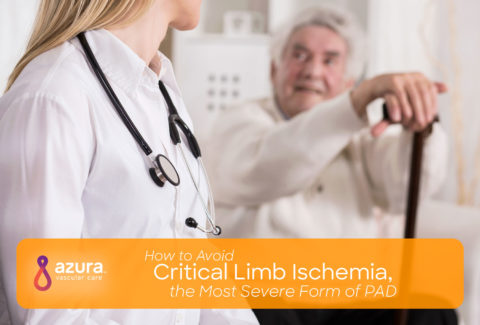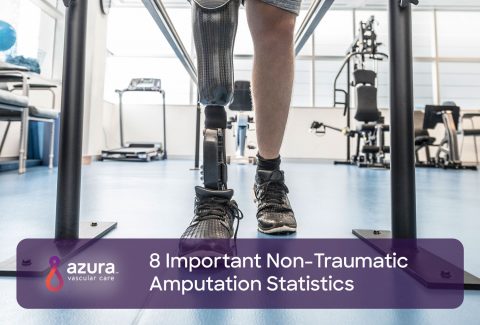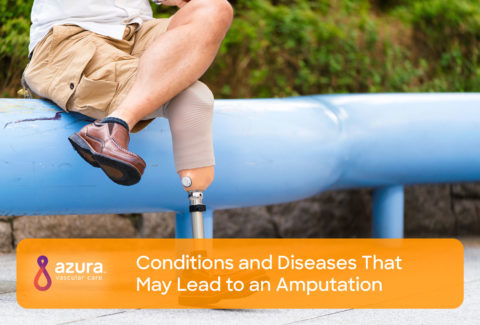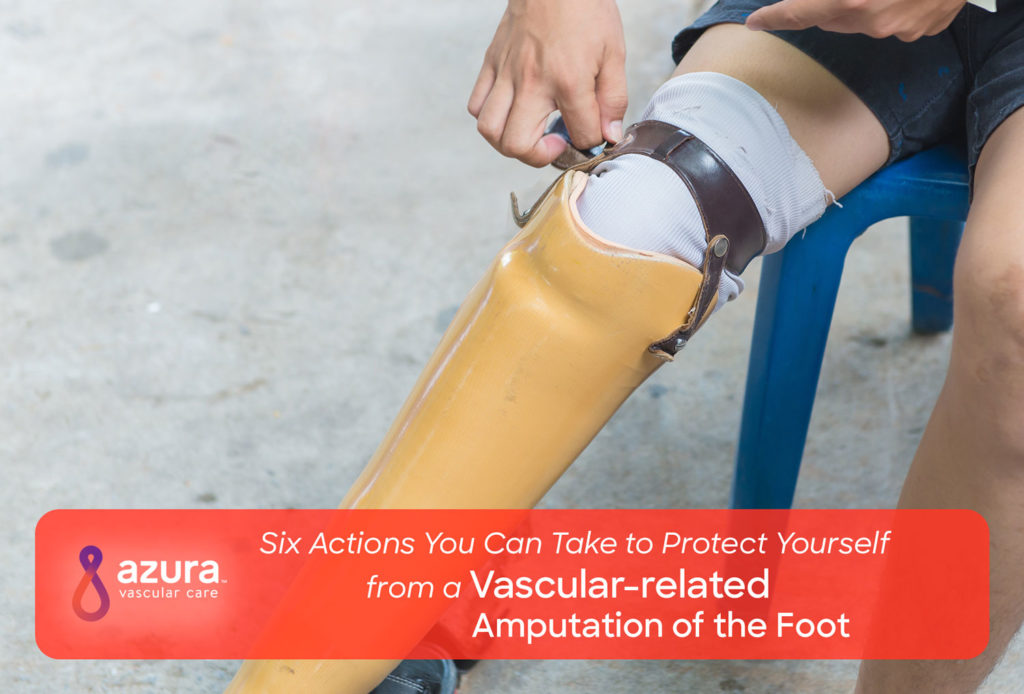
Accidents and trauma can certainly lead to limb and foot loss, but there are also progressive diseases including peripheral artery disease (PAD) that may lead to amputation. PAD is a progressive circulatory disorder marked by narrowed blood vessels and reduced blood flow to your limbs, especially your legs. Vascular-related amputation is the most common reason for amputation in the United States, but this outcome may be preventable. (i)
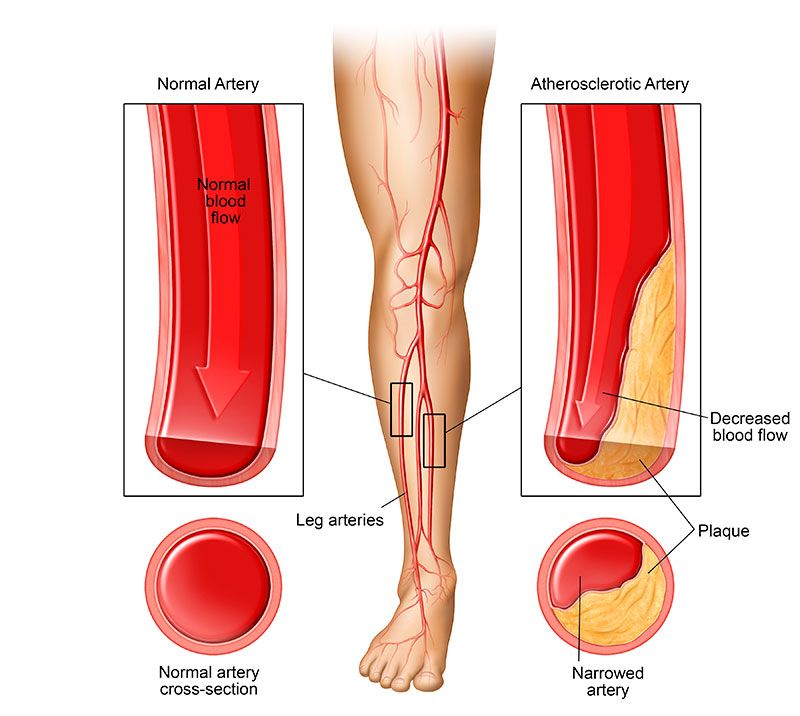
According to a study, millions of people in the U.S. have undergone an amputation, and close to 185,000 new amputations are performed each year, which equates to multiple amputations per day. The leading cause of limb amputation is vascular disease, which includes diabetes, diabetes-compounded PAD, and PAD without diabetes. (i)
Hospital costs associated with amputation total more than $8 billion annually and this life-saving surgery often depletes the financial savings of those who do not have medical insurance. (ii)
The statistics are frightening, but there are things you can do to lower your risk for vascular related amputation, specifically vascular-related foot amputation, even if you have already been diagnosed with diabetes or a vascular disease like PAD.
1. Quit Smoking
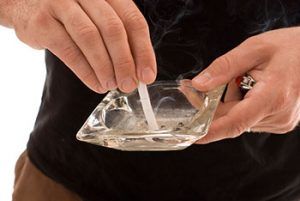 Smoking may be one of the biggest risk factors for PAD and according to a study, it may be a more significant risk factor for PAD than it is for coronary artery disease (CAD). Researchers suggest that smoking may interfere with lipoprotein metabolism, blood coagulation, and platelet function, which are found in PAD. (iii)
Smoking may be one of the biggest risk factors for PAD and according to a study, it may be a more significant risk factor for PAD than it is for coronary artery disease (CAD). Researchers suggest that smoking may interfere with lipoprotein metabolism, blood coagulation, and platelet function, which are found in PAD. (iii)
If you have tried to quit smoking but were unsuccessful, ask your doctor about medications or therapies that can help you quit.
2. Control Diabetes and Take Care of Feet
Diabetes is one of the leading causes of vascular amputation, specifically foot amputation, because foot ulcers are a common complication of diabetes. When insulin levels are not controlled and sugar is not metabolized correctly, complications like blindness, heart attack, stroke and foot ulcers can occur. amputation is also a concern.
The American Diabetes Foundation recommends: (iv)
- Checking your feet daily for cuts, swelling, or diabetic foot ulcers.
- Asking your doctor about special shoes.
- Washing your feet daily with gentle drying.
- Applying lotion to your feet, but not between your toes.
- Keeping toenails trimmed.
- Wearing socks and shoes all or most of the time.
- Protecting your feet from heat and cold to help prevent diabetic foot ulcers.
- Optimizing blood flow to your feet by wiggling toes, keeping feet elevated while sitting, and not crossing legs for extended periods of time.
Dietary changes may help control insulin levels, but if you cannot control your diabetes, see an endocrinologist immediately. If you notice diabetic foot ulcers or any non-healing foot ulcers, which may be a sign of PAD, contact your doctor immediately.
3. Exercise to Avoid Vascular Amputation
One of the major risk factors associated with PAD is lack of movement. Exercise such as walking may help prevent PAD and may slow progression of the disease if you have already been diagnosed with PAD.
Consult your doctor before beginning any exercise program.
4. Lower Blood Pressure
 High blood pressure is a risk factor for PAD and strongly associated with diabetes—both of which put you at risk for vascular amputation, specifically foot amputations.
High blood pressure is a risk factor for PAD and strongly associated with diabetes—both of which put you at risk for vascular amputation, specifically foot amputations.
In addition to dietary changes and exercise, try the following to help lower your blood pressure naturally:
- Drink less coffee.
- Drink less alcohol.
- Reduce stress.
- Lower salt intake.
If blood pressure is high, always see your doctor.
5. Lower Cholesterol
Along with exercise, diet is the best way to reduce your cholesterol naturally, which decreases the risk of developing vascular ulcers on your legs, which are often non-healing ulcers that may lead to vascular amputation.
Make the following dietary changes to help lower your cholesterol:
- Avoid trans fats.
- Add more high omega-3 foods to your diet such as oily fish, seeds and nuts.
- Cut out saturated fats.
- Eat more soluble fiber.
Talk to your doctor before making changes to your diet.
6. Seek Treatment or Assessment of Vascular Health
Avoiding arterial ulcers is key when it comes to saving your limbs, and early therapy can make a difference. Vascular specialists are experts in the treatment and management of conditions that affect your blood vessels. At Azura Vascular Care, our vascular specialists can treat you if you have already been diagnosed with PAD and suffer from symptoms.
Some of the minimally invasive treatments we offer include:
- Angioplasty
- Stent placement
- Thrombolytic therapy
These minimally invasive treatment options are performed in an outpatient setting and are designed to restore or improve blood flow to your limbs and help you avoid amputation.
If you have been diagnosed and have questions about PAD or would like to consult with our vascular specialists about treatment options, contact our office at 866-LEG-DOCS (534-3627) to schedule an appointment with a vascular specialist.
Sources:
(i) Ziegler?Graham K, MacKenzie EJ, Ephraim PL, Travison TG, Brookmeyer R. (2008). Estimating the prevalence of limb loss in the United States: 2005 to 2050. Archives of Physical Medicine and Rehabilitation, 89(3):422?9.
(ii) HCUP Nationwide Inpatient Sample (NIS). Healthcare cost and utilization project (HCUP). Rockville, MD: Agency for Healthcare Research and Quality; 2009, accessed October 23, 2018, from https://www.ahrq.gov/data/hcup/index.html.
(iii) Lu, JT, Creager, MA. 2004 Fall; 5(4):189-93. The relationship of cigarette smoking to peripheral arterial disease. Accessed December 12, 2018, from https://www.ncbi.nlm.nih.gov/pubmed/15580157.
(iv) American Diabetes Association. (2014) Foot care. Accessed October 23, 2018 from http://www.diabetes.org/living-with-diabetes/complications/foot-complications/foot-care.html.

